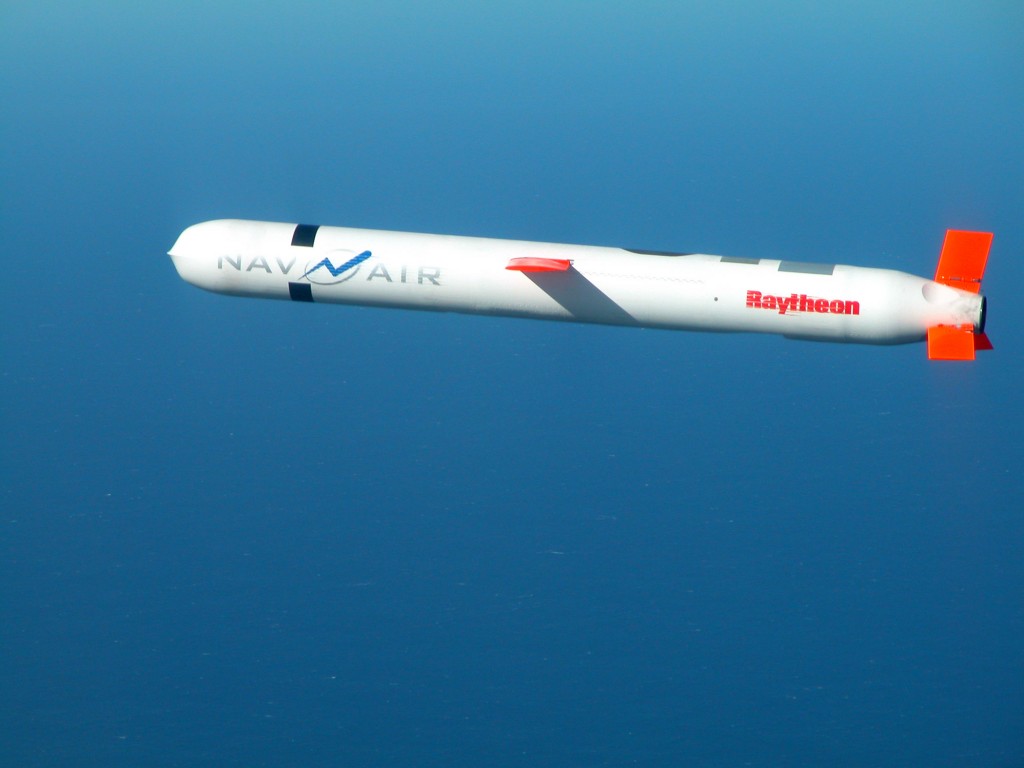Sourced : Israel Defence
By Yotam Gutman & Ami Rojkes Dombe
A recent experiment conducted by the United States on a new version of the Tomahawk cruise missile – the Tomahawk Block IV – suggests that it will serve as a temporary solution for American warships facing Chinese ships, at least until the new Sea-to-Sea missile is developed –namely the AGM-158C LRASM. Currently, there seems to be an operational gap regarding maritime cruise missiles between China’s and Russia’s Navies and the US Navy, which mainly counts on its Harpoon and Tomahawk missiles.
The Chinese Fleet is Growing Stronger
The capabilities gap opposite the Chinese and Russian Navies is further emphasized by the recent operations of the Russian fleet in the Middle East and the Chinese fleet in the China Sea. China has launched one operational aircraft carrier, and two others are on the way, based on a Russian design. Additionally, it is developing the DF41 missile designed to neutralize US aircraft carriers.
To better understand the growing influence of the Navy and Marine fleets on Asia, we recommend reading the article titled “How China wins the South China Sea war without firing a shot,” posted on the Asia Times website
Last week, China sent its aircraft carrier near Taiwan’s territorial waters (and into its airspace). This aggression against the United States’ protégé was a clear provocation towards the US. In another act of defiance, China is building artificial islands in the South China Sea and provokes Japan over the Senkaku Islands.
The Chinese Navy is also operating in the Middle East near the Yemeni war zone. It is engaged in operations against pirates, and we can assume it also gathers intelligence. China is also developing a new generation of Type 094A nuclear submarines with a range of 11,000 km, capable of threatening US cities. Additionally, China recently caught an American UUV performing “marine research” in the South China Sea.
Where is the LRASM?
One of the solutions developed by the US Navy in the wake of the Chinese naval build-up – mainly in the context of floating vessels – is a new sea-to-sea missile called LRASM. This missile is built on the basis of Lockheed Martin’s JASSM. According to the National Defense Magazine, The LRASM is co-developed with DARPA, and the plan is to have it ready to be launched from a B-1B bomber by 2018 and from a Navy F/A-18 E/F fighter by 2019. Lockheed Martin expects the US Navy to order 124 LRASM missiles at a price of one million dollars per missile.
Until then, the Navy needs a solution for the Chinese and Russian threats. Apparently, the solution is the Tomahawk. According to yahoo, the new version of the missile enables the US Navy to generate missile flight plans in real time to strike time-sensitive targets. “Tomahawk’s tactics and procedures have evolved to support the new missions that are being assigned to the weapon,” said Dave Adams, senior program director for Tomahawk at Raytheon Missile Systems. “Tomahawk continues to serve and rapidly deliver urgently needed capabilities to the Fleet.”
Two Tomahawk missiles containing inert warheads were launched from the Vertical Launch System of USS Pinckney (DDG 91) at the Naval Air Systems Command Sea Test Range off the Southern California coast. The first test was planned in real time by the crew of the USS Pinckney, who used the Launch Platform Mission Planning (LPMP) capability of the Tactical Tomahawk Weapons Control System, based on data provided by the United States Fleet Forces Command in Norfolk, Virginia. The Tomahawk missile followed a pre-planned route until the conclusion of the test.
In the second test, mission planners again used the dynamic LPMP capability to generate a longer-duration mission that also concluded with a terminal dive maneuver against the target. This test also validated missile performance for a long-duration mission. Tomahawk has a range of 1,000 statute miles and can defeat heavily defended targets virtually anywhere on Earth.
Image Sourced : U.S Navy


